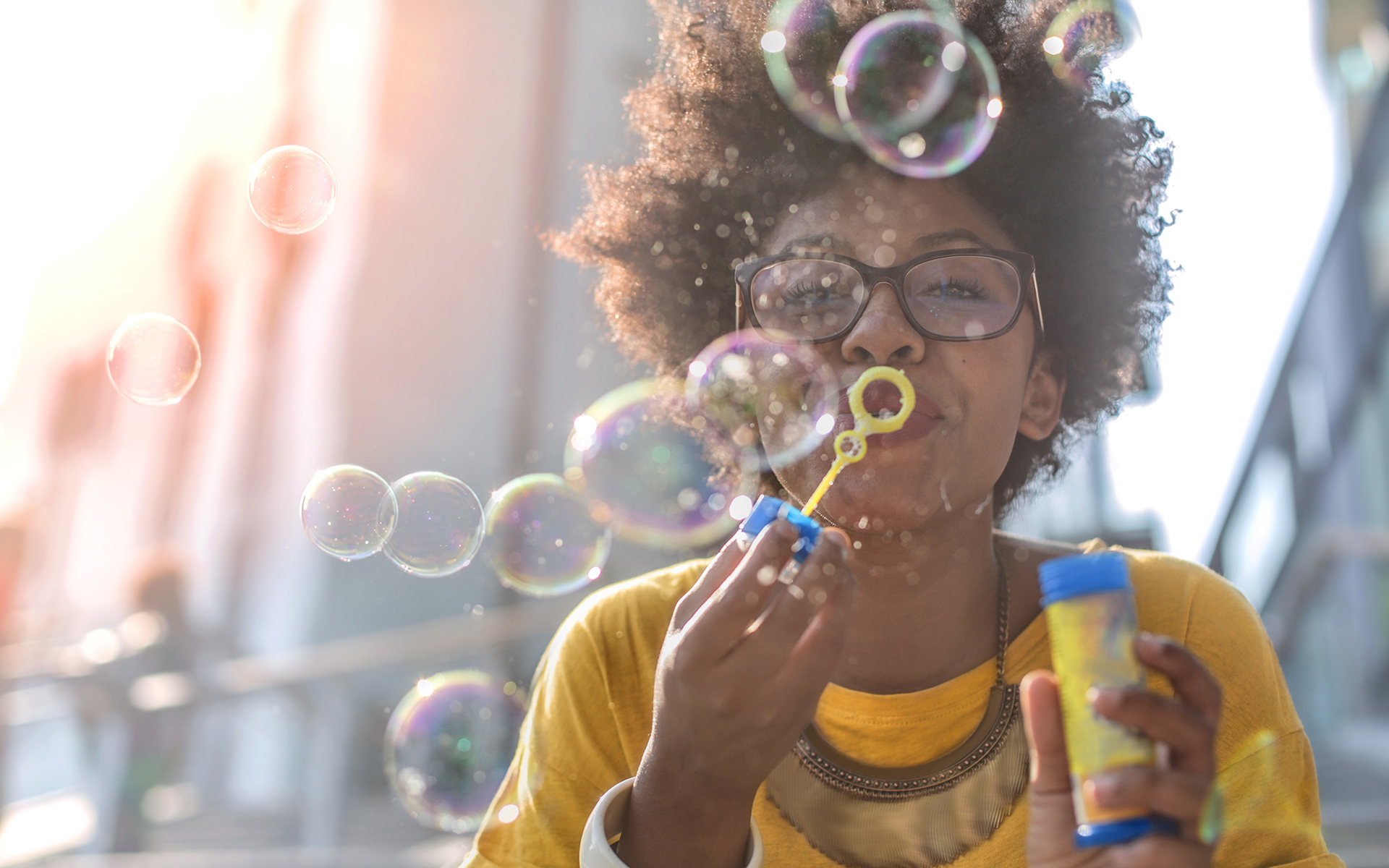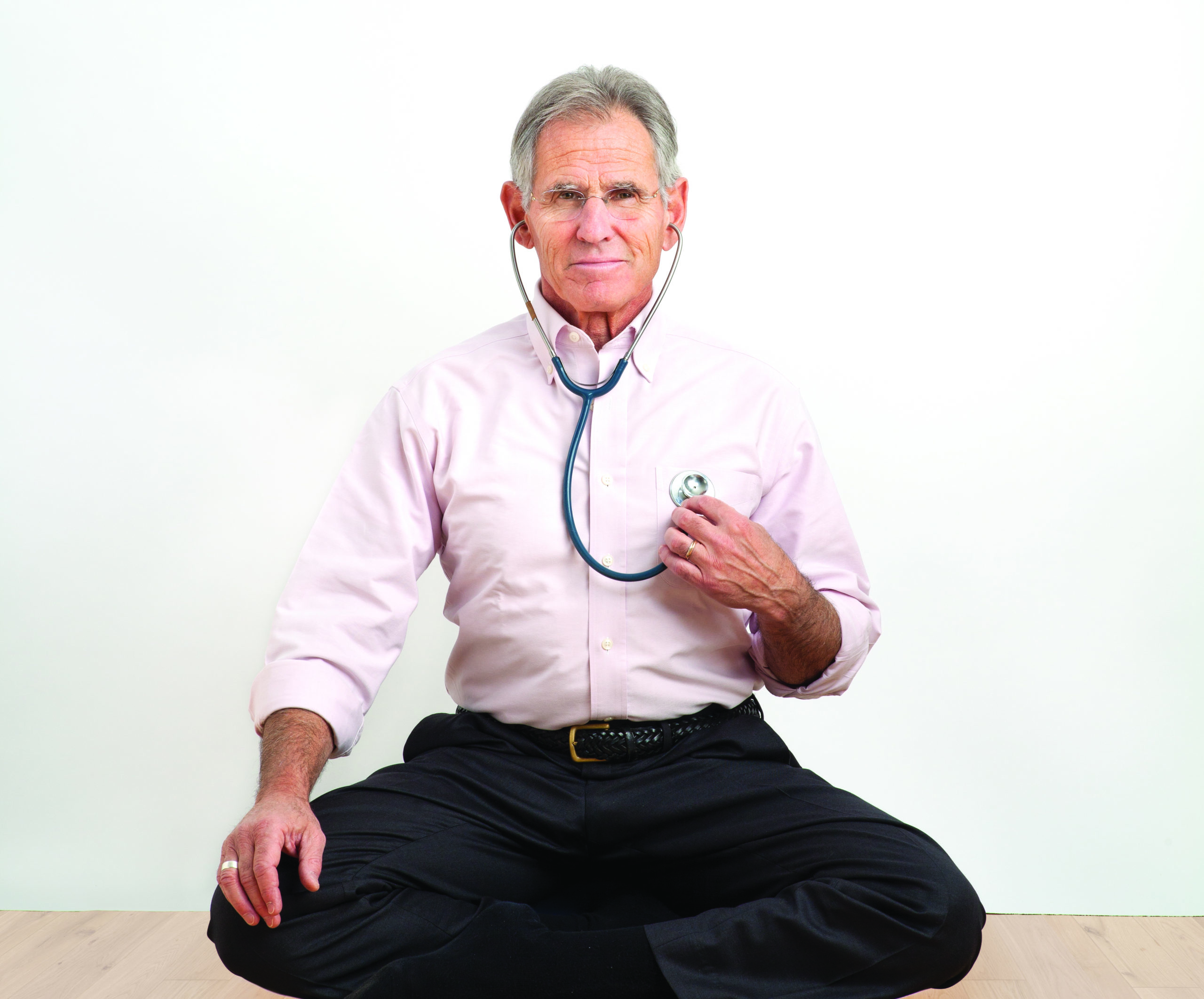At 11:00 am, just four hours before I was supposed to give a TEDx talk, I couldn’t remember my lines.
I was rehearsing, ready to give the most important talk of my life, and after the third line into the talk, my mind would go blank. The words, drowned deep down inside me, just couldn’t make their way to my mouth. I tried three times and failed each time. I heard myself thinking, Maybe I should gracefully bow out and give this talk when I am better prepared.
The irony wasn’t lost on me. What I was experiencing was exactly what my talk was about: “Returning to the Field Within: How to Be Mindful When It Matters Most.” Before acting on my impulse to back out from this opportunity, I decided to pause and follow my own advice to practice three mindful steps to return to my field of non-judging awareness.
Has this ever happened to you—right before you’re about to give a presentation or go for an important meeting, and your mind goes blank? What did you do in that situation?
When we’re mindful, we return to a spacious mind that is open to a sense of awe and endless possibilities.
Hundreds of clients’ experiences (and my personal experience) confirm that it’s challenging to be mindful outside of our meditation practice, especially in situations that push us out of our comfort zone like a contentious conversation, solving a complex problem, or giving a TEDx talk. By “mindful,” I am referring to our innate capacity to be present, open-minded, and intentional about our actions. Sometimes, it’s hard to know what mindfulness feels like, and the metaphor of a wide-open field can remind us: When we’re mindful, we return to a spacious mind that is open to a sense of awe and endless possibilities. Rumi’s famous quote from the poem, “The Great Wagon,” speaks to this field within:
Out beyond ideas of wrongdoing and rightdoing,
there’s a field. I’ll meet you there.
In critical moments, especially when we lack the resources to deal with challenging situations, we revert to default ways of reacting—like getting defensive, aggressive, or shutting down—that don’t offer the best outcomes. How can we return to our field within in the middle of challenges? There are three steps in a mindfulness practice that can empower us to show up intentionally and lovingly, even when we’re feeling terrible.
How I Returned to My Field Within
When we think of a mindfulness practice, the first thing that probably comes to mind is meditation. That is an essential step in any mindfulness practice, but there are two other steps that are easy to miss—contemplation and skillful actions.
In my mindfulness practice, especially when I am feeling stuck, I’ve noticed that after calming my mind and body with meditation, my mind wants to jump back to action. This tendency is common with participants in my mindfulness classes as well. It’s easy to skip the essential middle step of contemplation. Why is it so important? The space in between our awareness (of present moment experience) and our impulse to act is where limitless possibilities exist. When we gloss over this step, we lose the opportunity to skillfully bridge the gap between what’s happening right now and our deepest aspirations for what we want to see happen.
Here’s how I used the three mindful steps on the day of my TEDx:
Meditate: Once I became aware that I was feeling stuck, I took a few moments to meditate to calm my anxious mind, which was ready to believe my critical self that I am not ready to give the talk.
Contemplate: Once I had created a little more space in my mind and body, I examined my experience with an open and loving mind. Realizing that I was giving a TEDx talk after just four weeks of preparation, when it typically takes three to six months to prepare for a talk like this, my critical self could look at the situation with renewed confidence and gratitude for the opportunity to share work that I love and that could benefit people.
I realigned with my intentions for the talk by recalling the TEDx audience. As I started to engage with my experience in an intentional way, I realized that giving a perfect talk wasn’t the most important thing, although the perfectionist in me would argue otherwise. What was most important was that I show up fully and joyfully to share the work I love, in service of others. I knew first-hand, through my role as a town councilor, that this work can benefit everyone, especially in this time of divisiveness, pandemic, and inequities in our communities—when we need new ways to problem solve, communicate, and work with each other despite our differences.
This work can benefit everyone, especially in this time of divisiveness, pandemic, and inequities in our communities—when we need new ways to problem solve, communicate, and work with each other despite our differences.
When I connected with the ways in which leaders and changemakers can benefit from returning to the field within to respond intentionally to the challenges they’re encountering, I saw the TEDx talk as an opportunity to share this gift of mindfulness with others. Of course, I wasn’t going to turn away from it. My decision to go ahead with the talk was natural and effortless and didn’t emerge from a place of “should” or “have to.”
Act Skillfully: Once I was freed from the burden of showing up perfectly and aligned with my intentions to show up fully, I found the energy and courage to do what was needed in that situation. I resumed rehearsing my talk, this time trusting that I would remember because this is the work I have been practicing, teaching, and researching for so many years. And I did remember more than the three lines. I could almost give the entire talk without stopping. I wasn’t using the exact words in the script, but maybe my spoken words should have been the script in the first place. I rehearsed for several rounds with my heart and mind aligned with my intentions. That’s how I made it to my TEDx talk.
Using the Three Mindful Steps in Tough Situations
It’s not always easy or comfortable to stay in the space of not knowing the solution to our problem right away, to be patient when the mind wants to react and do something to ease the terrible feeling inside. The good news is that the more we practice and play with these three mindful steps, the more familiar and easier it gets to be mindful in the world, especially when it matters most.
1. Meditate (Connect)
Meditation is a practice to train our minds to attend to an object of choice to gain a clear and calm state of mind. There are many ways to meditate while sitting, lying, walking, or moving. Besides having a dedicated time to practice meditation, we can also mindfully connect with our breath, body, and other senses during activities like swimming, Zumba, or walking.
I also call this step “connect,” especially when we’re practicing mindfulness in the middle of our day, because it’s literally inviting us to connect with our present moment experience by directing our attention to the breath, body, or any other object of attention that we think will help us return to our inner spaciousness. Once we connect with our breath, body, and mind, we can notice if we’re feeling constricted and can we soften to create a little more space where it’s needed.
Other examples of ways we can reconnect with ourselves throughout the day include: using simple reminders like sticky notes, the sound of church bells, or other situational cues like waiting in a line, to stop and connect with our breath, body, or any other sense. We might notice the touch of summer breeze on the skin, the sounds of leaves rustling in the wind, the sight of clouds in the sky, or the smell of coffee or tea that we’re drinking. We can use any object at any time to reconnect with ourselves, each other, and our environment. The more we practice connecting with ourselves in non-critical situations, the more easily we’ll remember to reconnect with ourselves in critical situations. When we’re connected with our present moment experience, we disrupt our default tendencies to react, allowing us to return to our non-judging mind.
2. Contemplate (Question)
Once the mind and body are calm and spacious, we can contemplate our experience with an open and non-judging mind. I also call this step “question” because in this non-judging space, we can question our understanding of the situation and our intentions within it. An understanding of the causes and conditions helps us approach the situation with more empathy and explore different possibilities and perspectives, rather than going with our first impressions of the situation or people involved.
Contemplation is creating space for a deeper and broader understanding of our situation, beyond what is immediately available to us. It’s feeling and sensing our way in, as we expand the lens to explore what’s happening. Our intentions keep us anchored to what’s most important, while opening space for new possibilities and perspectives. There’s some thinking involved here, and the invitation is to be spacious, to see patterns and gain insight into our situation.
3. Act Skillfully
To act skillfully means that we align our thoughts, speech, and actions with our intentions to promote well-being for all who are impacted by our actions, including ourselves.
Our brains are miserly: They want to automate our actions and decision-making processes, so that we can efficiently conserve our limited mental and physical resources for emergencies. Researchers confirm that up to 95% of our daily decisions are made on autopilot. What this suggests is that just meditation and having good intentions isn’t enough to act on them. However, we can actively cultivate the habit of skillful actions by realigning our thoughts, speech, and actions with our intentions throughout the day. This empowers us to show up intentionally for ourselves, people we love, and our communities, even in challenging situations.
The Joy of Showing Up Fully
My husband drove me to the TEDx talk so I could spend a few minutes relaxing my mind and realign with my intentions. We arrived just in time for my turn to be recorded (this was during the pandemic, so the talk was being recorded for a TEDx event over zoom on a later date). I befriended the camera lights glaring at me and the round red carpet on which I was standing. Taking a few breaths to reconnect with myself including intentions for the talk, I looked around to connect with the audience. Even though there was nervousness in the mix of what I was feeling, what was most important was this opportunity to share the work I love and its potential to benefit others, just like it had benefited many of my clients and me. A few sentences into the talk, my words, mind, and body felt like one aligned energy interacting with the audience. I gave the whole talk without any retakes or edits (which were offered since it was a recording). It felt like a miracle!
And then came the day of the actual event. I was so excited to share the talk with my family, friends, and clients. I saw myself speak—and I was completely underwhelmed with my performance. There was the familiar voice of my inner critic, telling me you could’ve-should’ve done better. I felt a tightness in the pit of my stomach, even as I read a live feed of positive comments coming in from some of my favorite people in audience who I respect and adore. That wasn’t enough to appease the inner critic.
Enter the three mindful steps. After taking a few breaths to give my inner critic some space to be heard, I asked myself, “Did I show up fully – with my heart and mind aligned with my intentions for this talk?” And the answer was a resounding “Yes!” Could I have done anything differently to be better? The answer was, “No, I did everything I could, and I reached out for support and got the help I needed.”
In that moment, even though it wasn’t perfect, I experienced the joy that comes from showing up fully in our lives.
After reconnecting with myself and gaining clarity, I revisited my talk. This time I saw what was shared in the TEDx talk in a completely different light. I saw the earnestness, insights, and authentic expression of a person who was acting in alignment with her convictions. In that moment, even though it wasn’t perfect (whatever “perfect” means), I experienced the joy that comes from showing up fully in our lives.
Sometimes the outcomes exceed our expectations, and sometimes they are underwhelming. We don’t always have control over our circumstances and outcomes. What we do, however, have control over, is whether we’re showing up with love and in alignment with our intentions. When we show up fully, we will find joy, no matter how terrible the situation is.
A Practice for Showing Up Fully
You can start your day with the three-step mindfulness practice and play with these steps randomly throughout your day, when you’re having fun and when you’re feeling stuck. In fact, you could try it right now to see for yourself how it feels to show up fully in this moment.
Meditate: Take a few moments to connect with your breath moving in the body. No need to change your breath in any way. Simply connecting with each in breath and out breath, effortlessly. Is there space in the body for the breath to move with ease or is your body feeling constricted?
Contemplate: Once you sense the connection and spaciousness in your mind and body, ask yourself:
What is my current experience? Without judgment, notice the causes and conditions for how you’re feeling right now. What do you discover about yourself or situation when you widen the lens and look lovingly?
What is most important right now? Take a moment to realign with your intentions in this moment.
Act: How can you show up in alignment with your intentions in this moment? Even if it’s only for a few moments, how does it feel to be here, connected with yourself and your intentions?
read more
Meditation for Anxiety
Explore how mindfulness and meditation can help soften feelings of anxiousness, reduce stress, and calm a panic attack.
Read More
3 Ways to Be Kind to Yourself When You’re Feeling Blue
Feeling unwell can be hard work sometimes—and that might be a sign that it’s time to stop trying so hard. Taking the mindful path means making room for suffering, too.
Read More
A Practice to Reclaim Your Joy with Sebene Selassie
Experience the truth of your inherent belonging by connecting to the essential elements of the earth and remembering that we’re all made of the same stuff.
Read More










